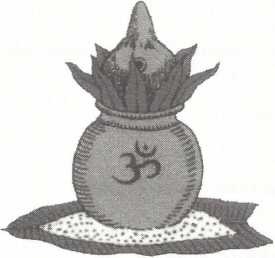Talk:Ghata
ghaṭa (‘a pot’) A ghaṭa or a mud-pot is an important accessory in many a Hindu ritual. When filled with water and decorated with certain leaves and coconut it becomes fit for any deity being ceremonially invoked into it. Such a ghaṭa is also called a kumbha or a kalaśa. It is one of the fourreceptacles of divinity, the other three being agni (fire), vigraha (icon) and sthaṇḍila (consecrated platform). It is sometimes used as an art motif indicating auspiciousness and abundance, on the pillars and doors in temples. A ceremonially installed pot is an essential part of the worship of the Divine Mother Durgā during the Navarātra festival. According to the works on Haṭhayoga, ghaṭa or ghaṭāvasthā is a state of prāṇā- yāma. In this state, the two prāṇas or vital airs—the prāṇa and the apāna—are in a balanced state leading to the union of the jīva (individual soul) with Paramātman (the Supreme Soul). In philosophical and mystical trea¬tises, the word ‘ghaṭa’ is sometimes used to indicate the body, since it is as fragile as a mudpot.

